| Edge Filters split incident light into two parts according to wavelength: one part contains the light with all the longer wavelengths and the other part the light with all the shorter wavelengths. One part of the incident light is transmitted and the other one is reflected and/or absorbed. Depending on whether the transmitted part contains the longer or shorter wavelengths, edge filter is called a long wave pass (LWP) or a short wave pass (SWP), respectively.
Advanced edge filters may contain a series of passbands and stopbands. The target of the long wave pass Edge Filters is to minimize transmittance below a specified a cut-on wavelength and maximize transmittance above it. Short wave pass filters are designed to reflect shorter wavelengths and transmit longer wavelengths. Longpass Edge Filters are used to isolate portions of the spectrum in a variety of industrial or life sciences optical devices. |
|
| Example: Short wave pass filters designed by OptiLayer using two different optimization methods: DLS (left panel) and Newton method (right panel). In both cases the same starting design (21-layer quarter wave with the central wavelength of 620 nm) was used. | |
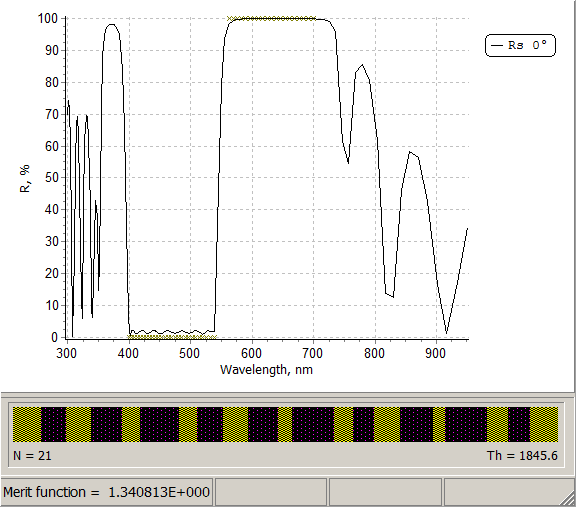 |
 |
| Example: Long wave pass filters designed by OptiLayer using two different optimization methods: DLS (left panel) and Newton method (right panel) in combination with the gradual evolution technique. In both cases the same starting design (21-layer quarter wave with the central wavelength of 620 nm) was used. | |
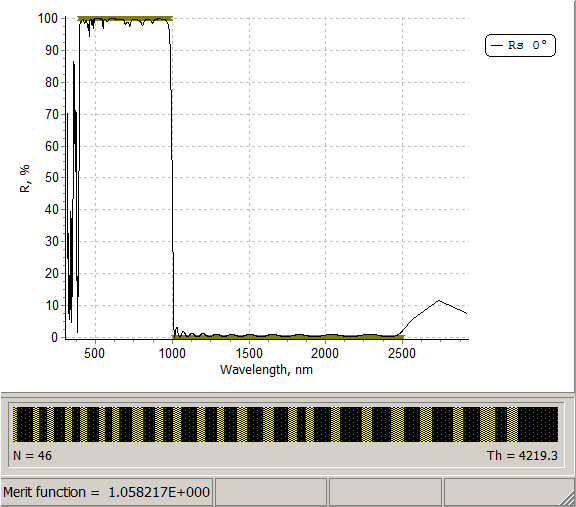 |
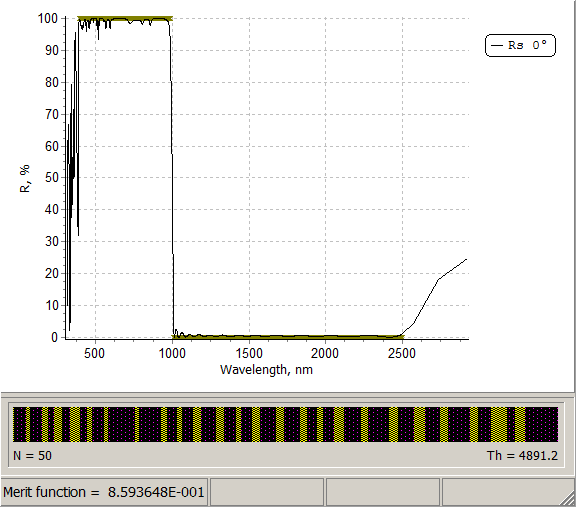 |
| Cold mirrors and hot mirrors are specific edge filters. A cold mirror reflects the entire visible light spectrum while very efficiently transmitting infrared wavelengths.
Example: transmittance and refractive index profiles of various cold mirrors designs obtained with the help of random optimization in combination of the gradual evolution technique. |
|
 |
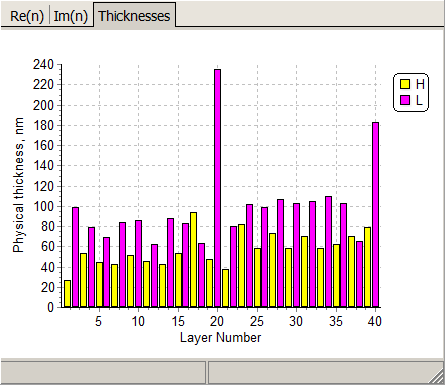 |
| Example: transmittance (in diabatic scale) and refractive index profile of a cold mirror quasi quarter wave design obtained with the help of sensitivity-directed refinement algorithm. | |
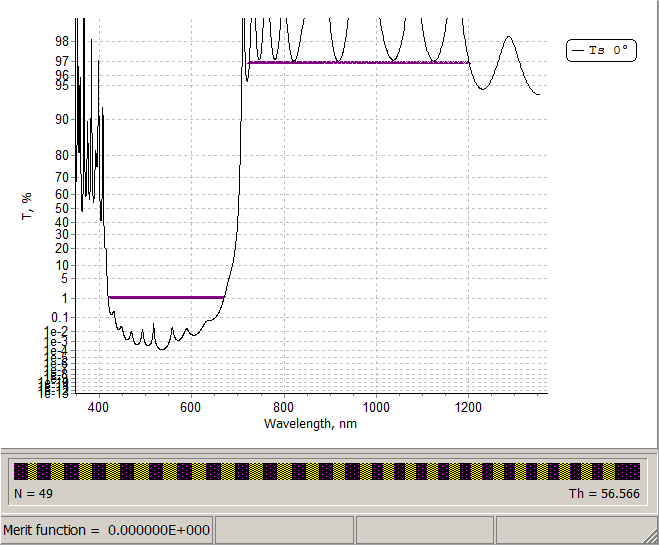 |
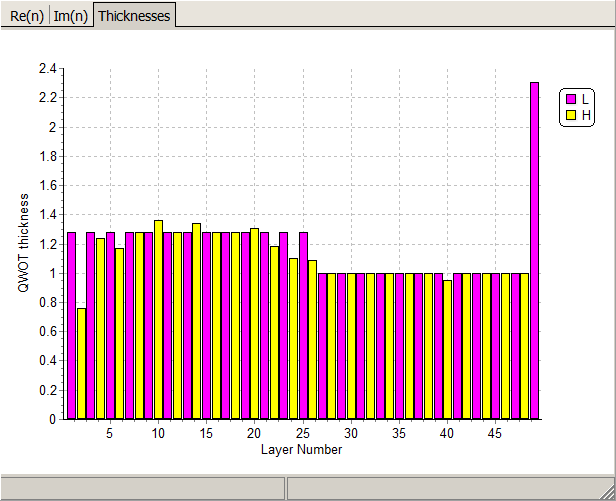 |
| Hot mirror is a special thin film coating that transmits the visible light and reflects infrared radiation. Hot mirrors can be designed for incident angles varying between 0 and 45 degrees. Hot mirrors are useful in a variety of applications. OptiLayer allows you to easily design a hot mirror for your own purpose.
Example: transmittance and refractive index profiles of various hot mirrors designs obtained with the help of random optimization in combination of the gradual evolution technique. |
|
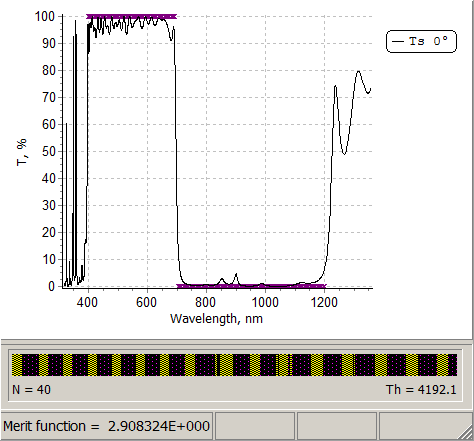 |
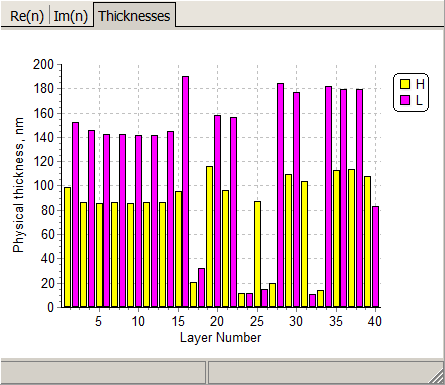 |
| Edge filters can work at non-normal incidence as well.
Example: Edge filters designs obtained with the help of random optimization in combination of gradual evolution technique. |
|
 |
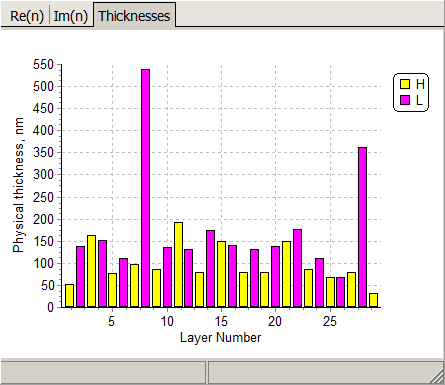 |
Look our video examples at YouTube
OptiLayer videos are available here:
Overview of Design/Analysis options of OptiLayer and overview of Characterization/Reverse Engineering options.
The videos were presented at the joint Agilent/OptiLayer webinar.